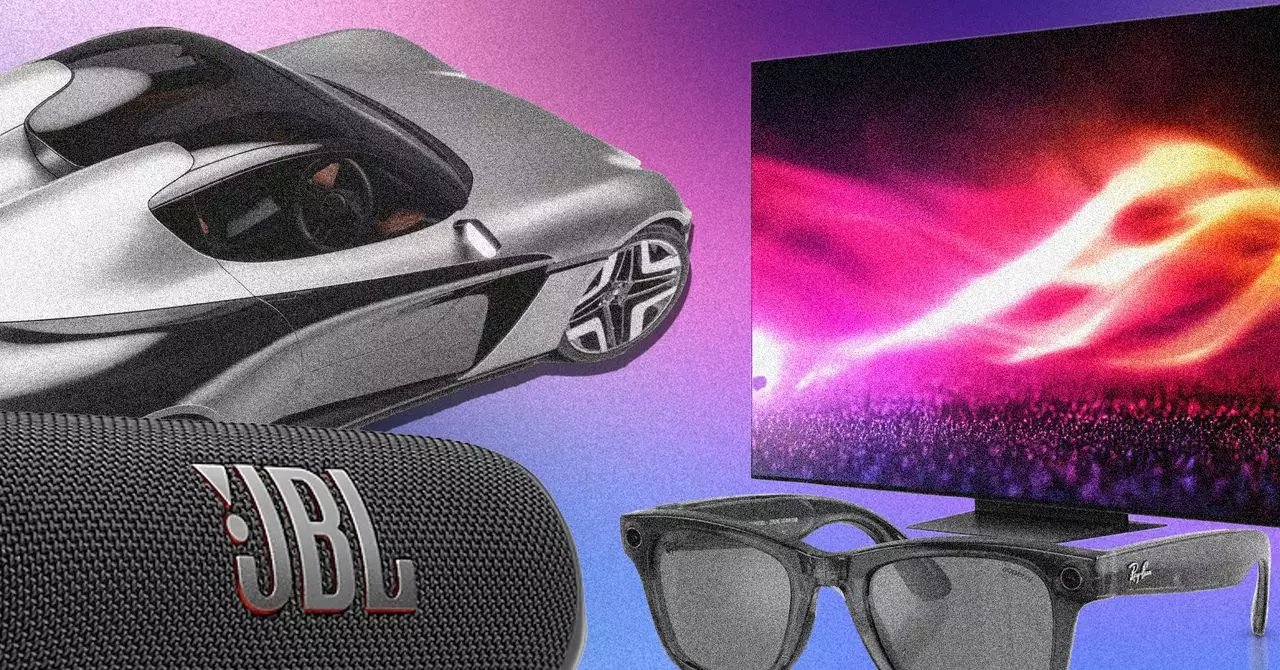In the ever-evolving landscape of technology and fashion, the new wave of smart accessories is nothing short of a revolution. The recent unveiling of the Ray-Ban Meta Wayfarers at Paris Fashion Week, in collaboration with the Parisian brand Coperni, highlights this trend beautifully. The union of technology and chic design is a testament to the fact that the aesthetics of wearable tech can drive consumer acceptance much more effectively than the tech specs alone.
Most people today are inundated with options when it comes to tech gadgets, especially smart eyewear, which often tread the line between utility and style. The Ray-Ban Wayfarers have long been an iconic choice, favored for their timeless design. Coupling this classic silhouette with cutting-edge capabilities such as AI integration, live video recording, and premium sound quality makes them not just a gadget but a coveted accessory. This strategic approach successfully diminishes the initial resistance many people harbor towards adopting new technologies, especially when it comes to their personal branding.
The Power of Collaboration in Design
Collaborations are the lifeblood of innovation in fashion. Meta’s alliance with Coperni, a brand known for its boundary-pushing creations and avant-garde approach, signals a shift towards more audacious designs in tech accessories. The limited-edition release not only creates a sense of urgency among consumers but also elevates the perceived value of the product. Utilizing a fresh and innovative label to launch technological products infuses an air of exclusivity that tech giants often lack.
Coperni’s reputation for creativity—like their famous dress-spraying stunt with Bella Hadid—perfectly encapsulates a modern attitude towards fashion. This move gives the product narrative a deeper resonance, connected to cultural moments that consumers find relatable, elevating it from just a pair of smart glasses to a cultural artifact.
Performance vs. Perception: Where Tech Meets Lifestyles
Despite the impressive features packed into the Ray-Ban Meta Wayfarers, the price point of $549 raises interesting questions about consumer behavior. It prompts a critical evaluation of what people are willing to pay for aesthetics plus features. While the glasses deliver on technological promises, looking exceptional makes a strong case for them being perceived as a lifestyle item rather than just another tech gadget.
To suggest that wearing these glasses instantly grants the wearer a panache akin to a tech mogul, however, may border on the farcical. It cleverly serves as both an aspirational image and a reminder that self-image often involves more than just technology. The add-ons like a sleek Coperni charging case amplify the allure but drive home the message that identity in modern society is a product of multiple layers—style, status, and self-expression.
The Competitive Landscape of Electric Vehicles
Moving over to the electric vehicle arena, the emergence of Longbow Motors is a noteworthy development. Founded by former executives from renowned companies like Tesla, BYD, and Lucid, their innovative designs challenge the norms and set a new benchmark in performance. The Speedster and Roadster aim to blend aesthetic appeal with exhilarating specifications, successfully capturing the market’s attention.
The high-end price tags of these models evoke a sense of exclusivity just as the Ray-Ban glasses do. Yet, what makes Longbow Motors stand out is the direct reference to Tesla’s Roadster, with co-founder Daniel Davy openly addressing the delays associated with competitors. The clear invitation to consumers to make a choice reinforces the competitive nature of consumerism. People are willing to invest in brands and experiences that offer not just quality but also timely delivery and satisfaction.
The Resonance of Sound in Technology
On the audio front, JBL’s refreshed offerings of the Flip 7 and Charge 6 reflect another facet of consumer tech—sound quality. The emphasis on real-time optimization and lossless audio via USB-C is not just about specs; it’s a reminder that consumers crave immersive experiences. JBL’s commitment to enhancing the auditory experience parallels the movements we see in visual wearable tech; it’s all about making technology seamlessly integrate into daily life without compromising on the joy it brings.
As technology continues to evolve at breakneck speeds, the critical evaluation between form and function becomes more pronounced. The coolest gadgets today are not just about utility—they reflect personal style, cultural relevance, and an understanding that design matters. In a world where lifestyle choices meld with digital experiences, the importance of aesthetics cannot be overstated. This intersection of style and technology is paving the way for a more engaging and interconnected future.

